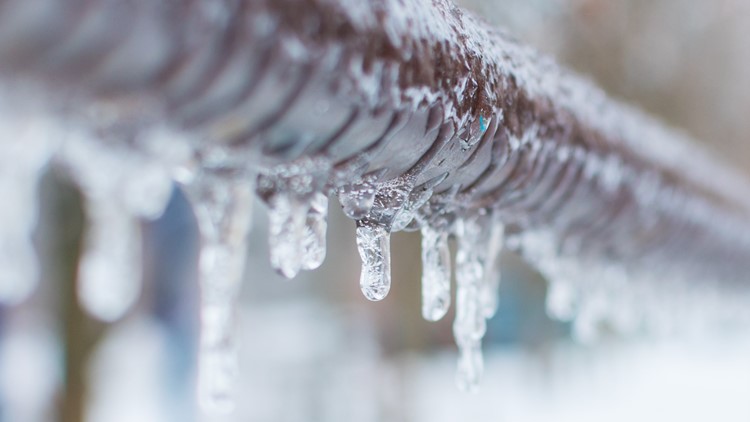Guidance for Avoiding Frozen Plumbing in Cold Weather: Specialist Tips
Guidance for Avoiding Frozen Plumbing in Cold Weather: Specialist Tips
Blog Article
We have encountered this article on How to prepare your home plumbing for winter weather directly below on the internet and think it made perfect sense to relate it with you over here.

Cold weather can damage your plumbing, especially by freezing pipelines. Below's how to avoid it from taking place and what to do if it does.
Intro
As temperature levels decline, the danger of icy pipelines boosts, possibly causing costly repairs and water damage. Understanding just how to prevent frozen pipelines is critical for home owners in chilly climates.
Avoidance Tips
Protecting vulnerable pipelines
Cover pipes in insulation sleeves or utilize warm tape to safeguard them from freezing temperature levels. Concentrate on pipes in unheated or outside locations of the home.
Heating strategies
Keep interior rooms sufficiently warmed, especially locations with pipes. Open cabinet doors to enable cozy air to flow around pipes under sinks.
How to determine frozen pipelines
Seek decreased water flow from faucets, unusual odors or noises from pipes, and visible frost on exposed pipes.
Long-Term Solutions
Structural adjustments
Consider rerouting pipes far from outside wall surfaces or unheated locations. Add extra insulation to attics, cellars, and crawl spaces.
Updating insulation
Purchase premium insulation for pipes, attics, and walls. Proper insulation helps maintain regular temperatures and minimizes the risk of frozen pipes.
Safeguarding Outside Plumbing
Garden hoses and outside faucets
Disconnect and drain garden hoses prior to winter months. Set up frost-proof spigots or cover outdoor taps with protected caps.
Understanding Frozen Pipelines
What creates pipelines to ice up?
Pipes freeze when revealed to temperatures below 32 ° F (0 ° C) for prolonged periods. As water inside the pipelines ices up, it increases, taxing the pipeline wall surfaces and possibly triggering them to rupture.
Dangers and problems
Icy pipes can result in supply of water disruptions, property damage, and costly repair services. Ruptured pipelines can flood homes and create substantial architectural damage.
Indicators of Frozen Piping
Recognizing icy pipes early can stop them from rupturing.
What to Do If Your Pipes Freeze
Immediate actions to take
If you believe frozen pipelines, keep taps available to alleviate stress as the ice melts. Make use of a hairdryer or towels soaked in warm water to thaw pipes gradually.
Verdict
Stopping icy pipes calls for proactive steps and fast responses. By comprehending the reasons, indicators, and preventive measures, house owners can shield their plumbing during cold weather.
6 Proven Ways to Prevent Frozen Pipes and Protect Your Home
Disconnect and Drain Garden Hoses
Before winter arrives, start by disconnecting your garden hoses and draining any remaining water. Close the shut-off valves that supply outdoor hose bibs and leave the outdoor faucet open to allow any residual water to drain. For extra protection, consider using faucet covers throughout the colder months. It’s also important to drain water from any sprinkler supply lines following the manufacturer’s directions.
Insulate Exposed Pipes
Insulating your pipes is an effective way to prevent freezing. Pipe insulation is readily available at home improvement stores and is relatively inexpensive. Pay close attention to pipes in unheated areas such as the attic, basement, crawl spaces, or garage. Apply foam insulation generously to create a buffer against the cold. You can also wrap your pipes in heat tape or thermostat-controlled heat cables for added warmth.
Seal Air Leaks
Inspect your home for any cracks or openings that could let in cold air. Seal any holes around the piping in interior or exterior walls, as well as the sill plates where your home rests on its foundation. Additionally, make sure to keep your garage door closed unless you’re entering or exiting. Leaving it open creates a significant air leak that can lead to frozen pipes.
Allow Warm Air Circulation
During cold snaps, it’s essential to allow warm air to circulate evenly throughout your home. Leave interior doors ajar to promote better airflow. Open kitchen and bathroom cabinets to help distribute heat consistently around the rooms. If you have small children or pets, be sure to remove any household chemicals or potentially harmful cleaners from open cabinets for safety.
Let Faucets Drip
A small trickle of water can make a big difference in preventing ice formation inside your pipes. When temperatures drop significantly, start a drip of water from all faucets served by exposed pipes. This continuous flow helps prevent the water from freezing. Additionally, running a few faucets slightly can relieve pressure inside the pipes, reducing the chances of a rupture if the water inside does freeze.
https://choateshvac.com/6-proven-ways-to-prevent-frozen-pipes-and-protect-your-home/

I came across that content about How to prepare your home plumbing for winter weather while browsing the internet. Loved our posting? Please share it. Help somebody else locate it. Thanks for being here. Don't hesitate to come visit our site back soon.
Click Here Report this page